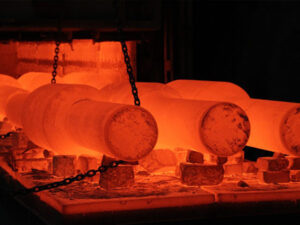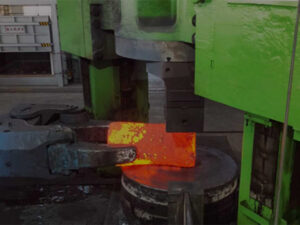Hot work tool steel is an indispensable material in various industrial applications, thanks to its exceptional heat resistance, wear resistance, and durability. However, to unlock its full potential, hot work tool steel must undergo precise heat treatment processes. The right heat treatment not only enhances its properties but also ensures the longevity of tools and components. In this comprehensive article, we will explore the best practices for hot work tool steel heat treatment, including the importance of heat treatment, key processes, and industry-specific considerations. 
1. Introduction
Heat treatment is a critical step in optimizing the performance of hot work tool steel. It involves a series of carefully controlled processes that alter the material’s microstructure and properties, enhancing its suitability for various industrial applications.
2. Hot Work Tool Steel: Composition and Properties
Alloying Elements
Hot work tool steel is precisely engineered with alloying elements, including chromium, tungsten, molybdenum, and vanadium. These elements provide heat resistance, wear resistance, toughness, and strength.
Heat Resistance and Wear Resistance
The exceptional heat resistance and wear resistance of hot work tool steel are essential for maintaining tool longevity and performance in high-temperature applications.
The Need for Heat Treatment
While hot work tool steel possesses inherent properties, heat treatment processes are necessary to optimize these properties, ensuring that the material meets specific industry requirements.
3. The Heat Treatment Process
Annealing and Stress Relieving
Annealing and stress-relieving processes help relieve internal stresses, refine the microstructure, and prepare the steel for subsequent heat treatment steps.
Hardening and Tempering
Hardening and tempering processes are essential for achieving the desired hardness, heat resistance, and toughness in hot work tool steel.
Subzero Treatment
Subzero treatment involves cooling the steel to extremely low temperatures to enhance its wear resistance and dimensional stability.
Cryogenic Treatment
Cryogenic treatment takes subzero treatment further, subjecting the steel to even lower temperatures to refine its microstructure and improve properties.
Surface Treatment
Surface treatments, such as nitriding or coatings, can enhance wear resistance and extend the life of hot work tool steel components.
4. Precise Control in Heat Treatment
Temperature and Time
Precise control over temperature and holding times during heat treatment processes is crucial to achieve the desired properties and prevent overheating or underheating.
Cooling Rates
Controlling the cooling rate, especially during quenching, is essential to avoid cracking and distortion while achieving the intended hardness.
Quenching Media
Different quenching media, such as oil, water, or air, are used depending on the specific requirements of the heat treatment process and the type of hot work tool steel.
5. Heat Treatment for Specific Industries
Die Casting
Die casting applications require specific heat treatment processes to ensure that hot work tool steel maintains dimensional accuracy and performance in high-temperature molten metal environments.
Forging
Forging operations subject hot work tool steel to extreme conditions. Proper heat treatment is crucial to ensure that forging dies endure mechanical stresses and impact loads.
Extrusion
In extrusion, maintaining the properties of hot work tool steel is vital for dimensional stability and extended tool life in high-temperature and high-pressure conditions.
Plastic Molding
Heat treatment processes tailored to the needs of plastic molding applications ensure that hot work tool steel molds produce high-quality components with tight tolerances.
6. Challenges and Considerations
Maintaining Dimensional Stability
Preventing distortion and dimensional changes during heat treatment is a challenge, especially for intricate tooling components.
Avoiding Cracking and Distortion
Proper quenching and cooling procedures are essential to prevent cracking and distortion in hot work tool steel.
Balancing Properties
Achieving the right balance between hardness, heat resistance, toughness, and wear resistance is a complex task in heat treatment.
7. FAQs
Frequently Asked Questions About Hot Work Tool Steel Heat Treatment
Q1. Can hot work tool steel be used without heat treatment?
While hot work tool steel possesses some inherent properties, heat treatment processes are essential to optimize these properties for specific applications. Heat treatment enhances heat resistance, wear resistance, and overall performance.
Q2. Are there industry standards for hot work tool steel heat treatment?
Industry-specific standards and guidelines may exist, depending on the application and sector. It is essential to consult relevant standards and work with experts in the field to determine the most appropriate heat treatment protocols.
Q3. How does the choice of quenching media impact the outcome of heat treatment?
The choice of quenching media significantly affects the cooling rate and, consequently, the material’s final properties. The selection should align with the desired hardness and other requirements of the heat-treated hot work tool steel.

